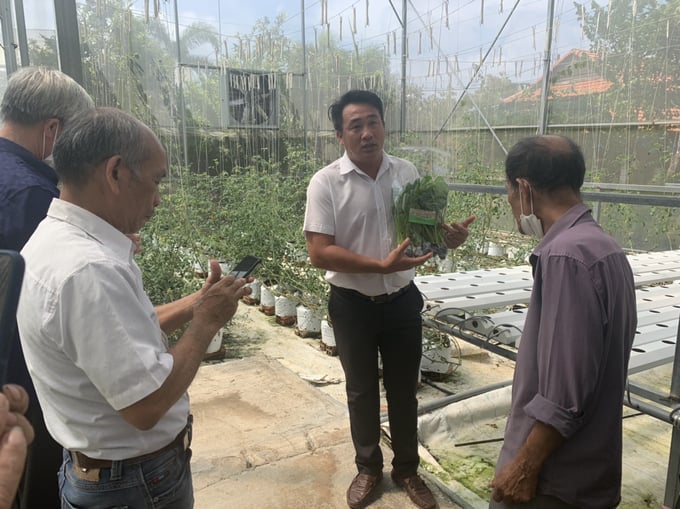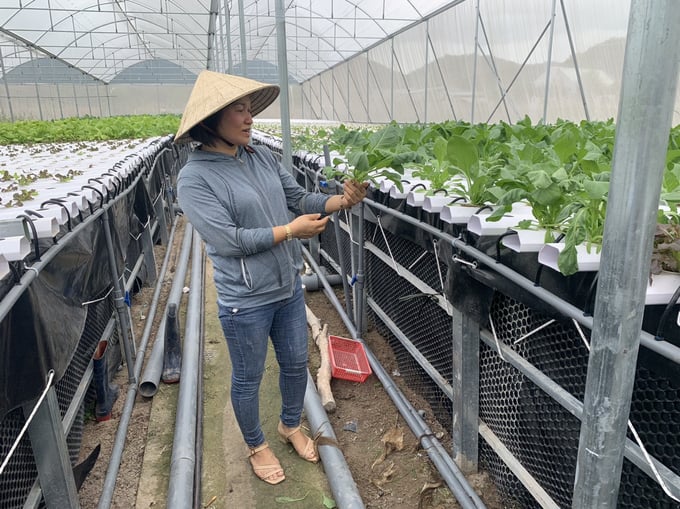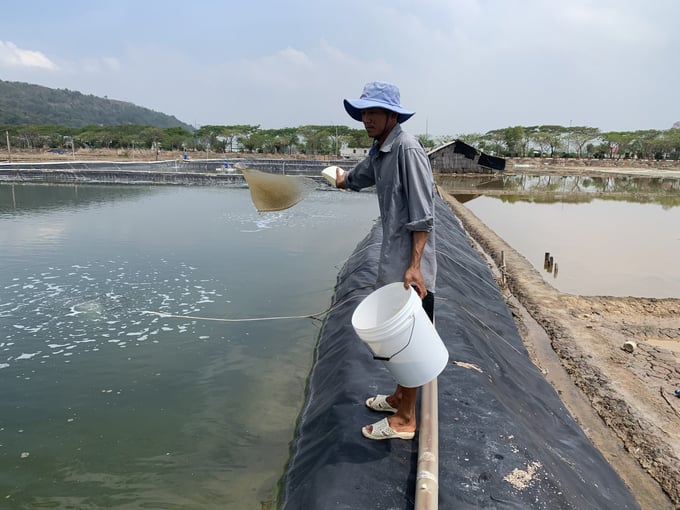June 21, 2025 | 01:57 GMT +7
June 21, 2025 | 01:57 GMT +7
Hotline: 0913.378.918
June 21, 2025 | 01:57 GMT +7
Hotline: 0913.378.918
In recent years, the agriculture sector in Ba Ria - Vung Tau has gradually promoted and adopted artificial intelligence applications into high-tech agriculture and automation in production processes, in-depth production to reduce energy waste, input material waste, and environmental impact, among other things.

The technology of In-Mold Closing (IMC) and sterilization. Photo: Hoang Trong.
In livestock production
Over a total area of 514.8 hectares, the province boasts 132 high-tech animal farms. Cooling technology is installed, probiotics are used, biological padding is used, and imported parent breeds are included. Tran Van Nam's farm poultry breeding laying eggs (Da Bac commune, Chau Duc district); Trang Linh pig farm (Bong Trang commune, Xuyen Moc district); Vinh Tan 2 pig farm (Song Xoai commune, Phu My town); and Nguyen Anh Duc's farming household's chicken and pig farm (Quang Thanh commune, Chau Duc district) are examples of typical livestock enterprises.
The livestock subsector in Ba Ria-Vung Tau also uses information technology to avoid animal diseases, such as the Vietnam Animal Health Information System (VAHIS), which allows for prompt information transmission between animal health organizations. The system allows for the gathering of information and data on diseases and epidemics on animals in accordance with the requirements of competent agencies, shortening space and time.

Growing high-tech vegetables in greenhouses in Ba Ria - Vung Tau. Photo: Hoang Trong.
In agricultural production
There are 434 high-tech agricultural businesses in operation in the province, on a size of more than 5,648 hectares, with a production area of more than 5,630 hectares, supplying the market with more than 51,098 tons of goods in 2022. The number of "high-tech" application facilities has expanded dramatically as a result of the development of investment in production linkages between firms, organizations, and individuals. Usually, VinaHarris Vietnam Co., Ltd. has executed a cooperative initiative to grow sustainable pepper in the province, with the results guiding and certifying 821 farmers covering an area of 820ha.
Furthermore, the water-saving irrigation system is primarily installed on crops covering a total area of more than 15,446 hectares, of which the annual water-saving irrigation area is 2,995 hectares, and the area of land for growing edible crops is 2,995 hectares, more than 6,470ha of fruit trees, and 5,981ha of perennial crops (excluding fruit trees).

Model of hydroponic vegetable growing in greenhouses in Ba Ria - Vung Tau. Photo: Hoang Trong.
In aquaculture
The fishing industry transfers and applies marine electrical machines for surrounding net fishing and trawl fishing including Furuno Radar, Koden (scanning 32, 48, and 72 nautical miles); horizontal detector (360-degree scan); color chart positioning; environmental analyzer (for ocean tuna fishing); flow meter; radio buoys; satellite phone, among others. These technologies are transferred and used by the fishing industry to aid in the detection and assessment of fish stocks and to ensure the safety of people and fishing vessels when operating at sea.
Furthermore, transferring and applying preservation technology for seafood products using stainless steel and polyurethane materials; production of nano-molecular-cooled slurry; and freezing equipment (system freezing equipment -18 to -70 degrees Celsius is commonly used on industrial fishing vessels with iron shells or new material shells in developed fisheries).

Model of aquaculture in 3 stages in tarpaulin ponds. Photo: Hoang Trong.
The aquaculture subsector is constantly updating and adopting new and advanced farming methods, such as the 3C shrimp farming process (clean shrimp seeds, clean water, and clean pond bottom) and close-circular water, automatic feeding machine, pond bottom aeration system; shrimp farming process in many stages in the greenhouse, and lining the banks and pond bottoms. Automatic environmental monitoring systems are also used on some farms. There are now 18 enterprises in the province breeding and manufacturing high-tech aquatic breeds over an area of 349.5ha.
Around 6,300 hectares are devoted to aquaculture in Ba Ria-Vung Tau. The provincial Agriculture and Rural Development Department has encouraged locals to apply science and technology into production, built centers for aquatic seedling research, and turned to high-tech solutions to manage risk, increase productivity and quality, and adapt to climate change to develop the sector sustainably on a large scale. This is part of the department's larger effort to develop the sector sustainably on a large scale.
Aquaculture is also benefiting from modern technologies through cage farming. Environmental monitoring and environmental alerts are distributed to aquaculture families in the province twice a month by appropriate entities. The overall number of establishments receiving messages was 340/374, representing 90.9% of all establishments.
Translated by Linh Linh
/2025/06/17/3942-2-143243_548.jpg)
(VAN) Recently, in Sweden, the Secretary of the Binh Dinh Provincial Party Committee presented the Investment Registration Certificate for the 'Polyester Fabric Recycling Complex' project to SYRE Impact-AB Company.
/2025/06/12/3721-2-202745_83.jpg)
(VAN) TH made an impression at Seoul Food 2025 with its line of natural beverages, paving the way for Vietnamese food products to enter the South Korean market.

(VAN) Soc Trang's success in rice exports stems from a strategy of developing fragrant and specialty rice cultivation areas and standardizing production toward low-emission practices.
/2025/06/11/1311-5-120811_839.jpg)
(VAN) The pig farming industry is facing the challenge of comprehensive restructuring to meet requirements for quality, safety, traceability, and market expansion both domestically and for export.

(VAN) Vietnam considers participating in ALGROALBA in order to expand agricultural production, coordinate the assessment and effective exploitation potential land.
/2025/06/05/5314-1-184727_407.jpg)
(VAN) From seemingly worthless fish scales and skin, enzymes and lactic ferments can transform by-products into peptides, opening a sustainable, effective business direction and elevating Vietnamese seafood.

(VAN) TTC AgriS and IFC signed a strategic partnership to develop a sustainable agricultural value chain, aiming to achieve the Net Zero target by 2035.